
Science with Passion
Application No.: VCH0019
Version 1 10/2021
No suppression – Simultaneous determination of monovalent inorganic ions using HPLC-ELSD
Juliane Böttcher, Kate Monks, Jan Wendrich; applications@knauer.net
KNAUER Wissenschaftliche Geräte GmbH, Hegauer Weg 38, 14163 Berlin
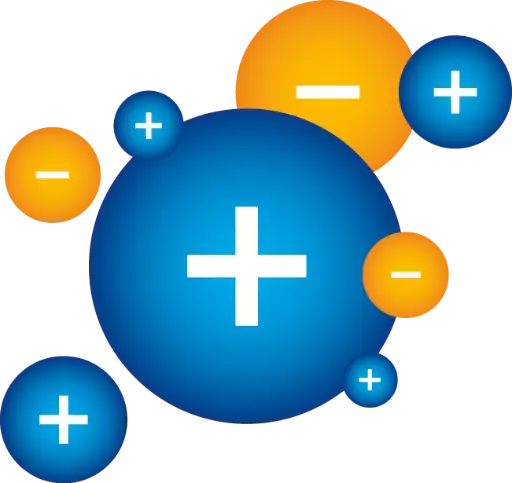
Graphic: KNAUER
Summary
Commonly the analysis of highly polar compounds is realized with ion exchange (IEX) or ion chromatography (IC) and so users are often limited to particular methods(1). These methods usually go along with the use of suppressors or other additional equipment to enable the detection by conductivity measurement. Using a special HILIC mixed-mode column in combination with evaporative light scattering detection (ELSD) allows to apply a simple isocratic method with a standard LC system configuration.
Introduction
The most challenging task when analysing inorganic ions is the choice of the right column. There are several possibilities in separation modes: anion exchange, cation exchange, or HILIC. A great choice when it comes to the determination of cations and anions are mixed-mode columns, which combine both separation mechanisms (IEX and HILIC). Compared to commonly used methods for IEX or IC, HILIC and mixed-mode columns provide a couple of advantages. These columns are used with eluents that are usually a composition of acetonitrile and water, so no acidic or alkaline modifiers are necessary, and no suppressors for conductivity detectors are needed. Furthermore, it is possible to analyse cations and anions at the same time. Additionally, common methods for ion chromatography require a conductivity detector, as inorganic ions do not have any chromophore making them invisible for UV detectors. As a high concentration of modifiers in the mobile phase of this methods is sometimes necessary, the buffer leads to a certain background conductivity. This issue can be overcome by using a suppressor system, which increases the complexity of the system as well as the operational costs.
Introduction
On top of this, these ion chromatography systems usually have a metal-free fluidic path, meaning these types of applications cannot be run on a standard HPLC system. With our approach, it is possible to use a standard HPLC system for the determination of inorganic ions without the need of buying a completely new IC system. But in which samples and matrices do these compounds occur? A common application for this kind of analysis is for example the quality control of beverages, like mineral water or drinking water. The following application shows the determination of certain inorganic ions, separated on a mixed-mode stationary phase combined with evaporative light scattering detection. Compounds that are less volatile than the mobile phase can be analysed and so the compounds do not need chromophore groups or electroactive groups. The detection principle can be divided into three steps: nebulization, evaporation, and detection(2).
Sample Preparation
All standards were prepared by weighing the salts and solving them in deionized water. The conductivity of the used water should not exceed 0.05 µS/cm.
Concentration and molarity of single standards/stock solutions
Salt | Weigh-in (mg) | Volume (ml) | Concentration (mg/ml) | Molarity (mM) |
LiBr | 50.00 | 10 | 5.00 | 57.57 |
NaCl | 67.00 | 10 | 6.70 | 114.65 |
KH2PO4 | 58.00 | 10 | 5.80 | 42.62 |
NaClO3 | 55.00 | 10 | 5.50 | 51.67 |
KI | 65.00 | 10 | 6.50 | 39.16 |
For qualitative identification, the stock solutions were diluted with deionized water and injected individually. For calibration, a mixed standard was prepared. The cations and anions were calibrated based on their molarity in the mixed standard. The mobile phase should be renewed regularly because changes in ion strength and pH values will influence retention time.
Results
The separation was performed in isocratic mode. The inorganic salts were separated into anions and cations successfully (Fig.1 to Fig. 5). The identification of ions was realised with the injection of salts that have the same cation but a different anion e.g. KH2PO4 and KI or NaCl and NaClO3.
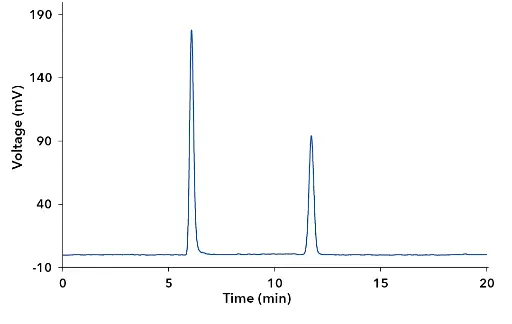
Fig. 1 Chromatogram of KH2PO4, (1) H2PO4-, (2) K+
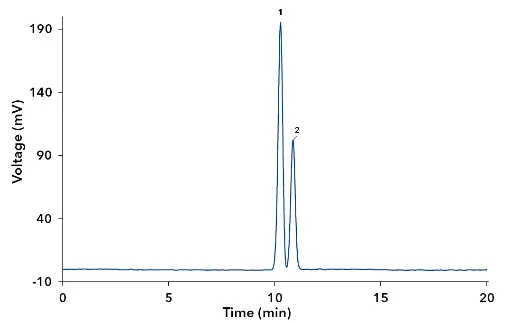
Fig. 2 Chromatogram of NaClO3, (1) ClO3-, (2) Na+
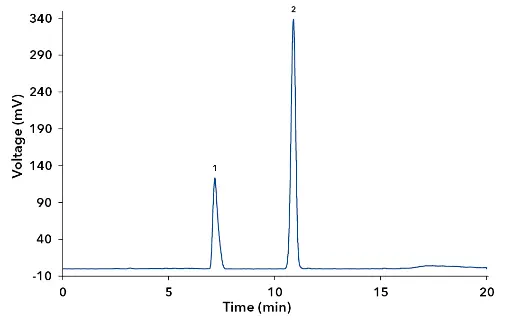
Fig. 3 Chromatogram of NaCl, (1) Cl-, (2) Na+
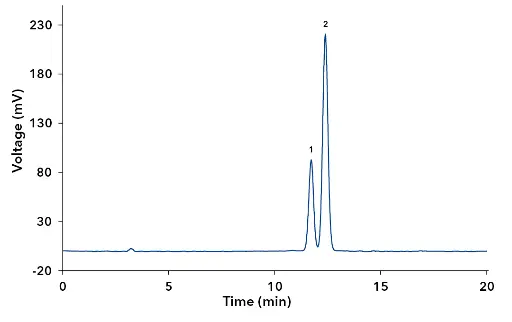
Fig. 4 Chromatogram of KI, (1) K+, (2) I-
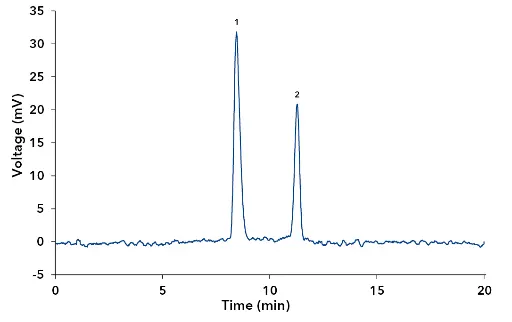
Fig. 5 Chromatogram of LiBr, (1) Br-, (2) Li+
Tab. 2 Retention times of ions
Ion | Retention time (min) |
H2PO4- | 6.09 |
Cl- | 7.28 |
Br- | 8.48 |
ClO3- | 10.18 |
Na+ | 10.83 |
Li+ | 11.33 |
K+ | 11.72 |
I- | 12.43 |
When analysing the mixed standard, it could be seen that the Li+ and K+ cations are eluting at a similar retention time and only show partial separation. Depending on the sample matrix, it is possible that not both monovalent cations are present and therefore could be quantified easily.
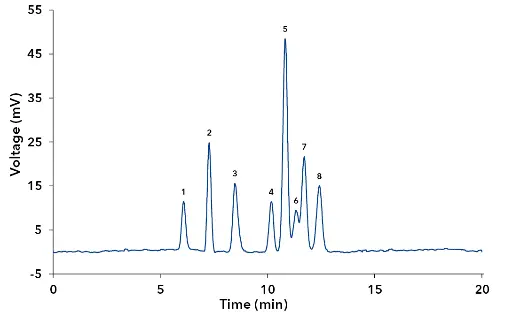
Fig. 6 Chromatogram of mixed standard, (1) H2PO4-, (2) Cl-, (3) Br-, (4) ClO3-, (5) Na+, (6) Li+, (7) K+, (8) I-
For the mixed standard a 5-point calibration was performed. The molarity of sodium and potassium in the mixed standard was the sum of the ion molarities provided through NaCl/NaClO3 and KI/KH2PO4.
Molarity of anions and cations in calibration solutions
Ion | Level 1 (mM) | Level 2 (mM) | Level 3 (mM) | Level 4 (mM) | Level 5 (mM) |
H2PO4- | 0.87 | 1.74 | 2.62 | 3.49 | 4.36 |
Cl- | 2.29 | 4.59 | 6.88 | 9.17 | 11.47 |
Br- | 1.15 | 2.30 | 3.45 | 4.61 | 5.76 |
ClO3- | 1.03 | 2.07 | 3.10 | 4.13 | 5.17 |
Na+ | 3.33 | 6.65 | 9.98 | 13.31 | 16.63 |
Li+ | 1.15 | 2.30 | 3.45 | 4.61 | 5.76 |
K+ | 1.64 | 3.27 | 4.91 | 6.54 | 8.18 |
I- | 0.78 | 1.57 | 2.35 | 3.13 | 3.92 |
For the calibration calculation, the decadic logarithm of the peak area was plotted linearly over the decadic logarithm of the concentration/molarity. Evaporative light scattering detectors (ELSD) have limited direct linearity. When larger ranges of concentration are required evaporative light-scattering detection generally provides a sigmoid, logarithmic, or quadratic response depending on the application, so here the standard log-log transformation was used(2). All calibration curves showed a satisfactory fit with a coefficient of determination R2 ≥ 0.998. Based on the measurements of level 1 of the calibration curve, the limit of detection (LOD) and limit of quantification (LOQ) were calculated. A signal-to-noise ratio (S/N) of S/N=3 for LOD and S/N=10 for LOQ were taken as a basis.
Tab. 4 LOD and LOQ
Ion | LOD (S/N=3) (mM) | LOQ (S/N=10) (mM) |
H2PO4- | 0.056 | 0.188 |
Cl- | 0.064 | 0.212 |
Br- | 0.049 | 0.164 |
ClO3- | 0.060 | 0.200 |
Na+ | 0.046 | 0.153 |
Li+ | 0.089 | 0.297 |
K+ | 0.052 | 0.174 |
I- | 0.036 | 0.119 |
Three samples of tap water and mineral water were measured without any further sample preparation. According to the 2020 EU Directive (2020/2184), of the European Parliament and Council of on the quality of water fit for human consumption, the amount of sodium should be ≤ 200 mg/l and for chloride, a limit of ≤ 250 mg/l is specified(3).
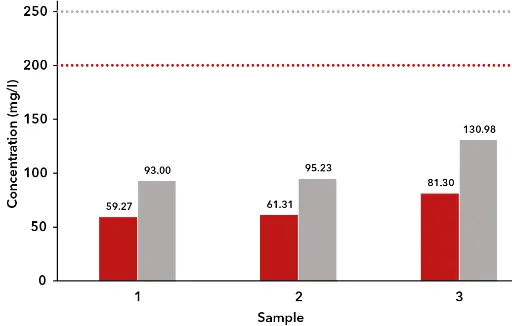
Fig. 7 Sample results for tap water, red – Na+, grey – Cl-
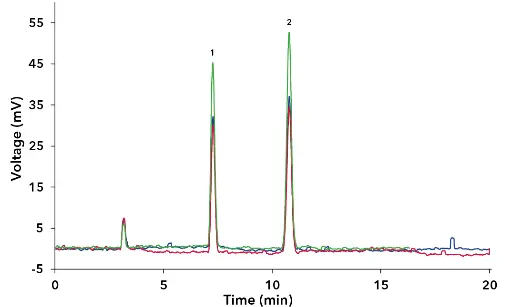
Fig. 8 Overlay of tap water samples, (1) Cl-, (2) Na+
All tap water samples were found to be within the limit values for sodium and chloride listed in Directive (EU) 2020/2184. Other investigated ions were not found/present in tap water samples.
Tab. 5 Sample results, mineral water
Sample | Na+(mM) | Na+(mg/l) | Cl- | Cl- | K+ | K+ |
1 | 0.28 | 6.44 | 0.70 | 24.82 | – | – |
Set point 1 | – | 7.20 | – | 14.00 | – | – |
2 | 0.41 | 9.40 | 0.08 | 2.93 | 0.05 | 2.14 |
Set point 2 | – | 6.80 | – | 5.20 | – | 1.50 |
3 | 6.15 | 141.37 | 1.59 | 56.24 | 0.46 | 17.82 |
Set point 3 | – | 118.00 | – | 40.00 | – | 11.00 |
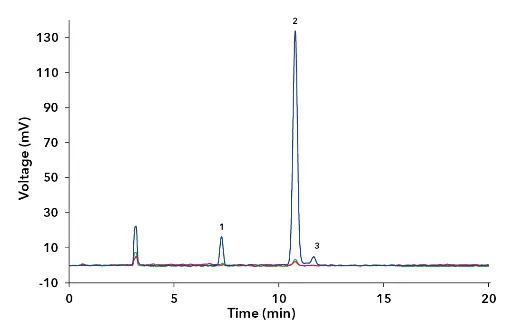
Fig. 9 Overlay of mineral water samples, (1) Cl-, (2) Na+, (3) K+
The results of the mineral water samples were found to be on the same scale as the amounts stated on the bottle label (set point values). Any deviation between the specifications and measured values may be the result of the application of different analytical methods.
Conclusion
Mixed-mode columns are perfectly suited for the analysis of small polar compounds, such as inorganic anions and cations. The simple to execute isocratic method in combination with evaporative light scattering detection makes the use of specialised equipment e.g., suppressors, metal-free systems, etc., obsolete and provides a good alternative for quality control of beverages.
Materials and Methods
Method parameters | |
Column temperature | 40 °C |
Injection volume | 5 µl |
Injection mode | Partial Loop |
Detection | ELSD |
Pump parameters
Eluent A | 20 mM ammonium formate adjusted to pH 3 with formic acid | ||
Eluent B | Acetonitrile | ||
Flow rate | 1.0 ml/min | ||
Gradient | Time | % A | % B |
0 | 70 | 30 | |
20 | 70 | 30 |
Detector settings | |
Temperature | 70° C |
Gain | Dynamic |
Pressure (N2) | 3.5 bar |
Data rate | 10 Hz |
Filter | 10 s |
Autozero | Before run |
Offset | 0 mV |
System configuration
Instrument | Description | Article No. |
Pump | AZURA P6.1L, HPG | |
Autosampler | AZURA AS 6.1L | |
Detector | SEDEX 100LT | |
Thermostat | AZURA CT 2.1 | |
Column | Amaze TH Mixed-Mode, 250 x 4.6 mm ID, 5 µm | ––– |
Software | OpenLAB CDS EZChrom Edition - Workstation | |
Software | OpenLAB CDS EZChrom Edition - drivers for ELSD Sedex 80LT, 85LT, 90LT, 100LT, LC |

References
[1] https://www.agilent.com/cs/library/applications/5991-8602EN_HILIC_Inorganic_ions_application.pdf, 10.12.2020
[2] https://sedere.com/technology/, 07.07.2021
[3] https://eur-lex.europa.eu/eli/dir/2020/2184/oj, 05.07.2021
Application details
Method | HPLC |
Mode | HILIC |
Substances | lithium bromide, sodium chloride, potassium dihydrogenphosphate, sodium chlorate, potassium iodide |
CAS number | 7550-35-8, 7647-14-5, 7778-77-0, 7775-09-9, 7681-11-0 |
Version | Application No.: VCH0019 | Version 1 10/2021 | ©KNAUER Wissenschaftliche Geräte GmbH |


